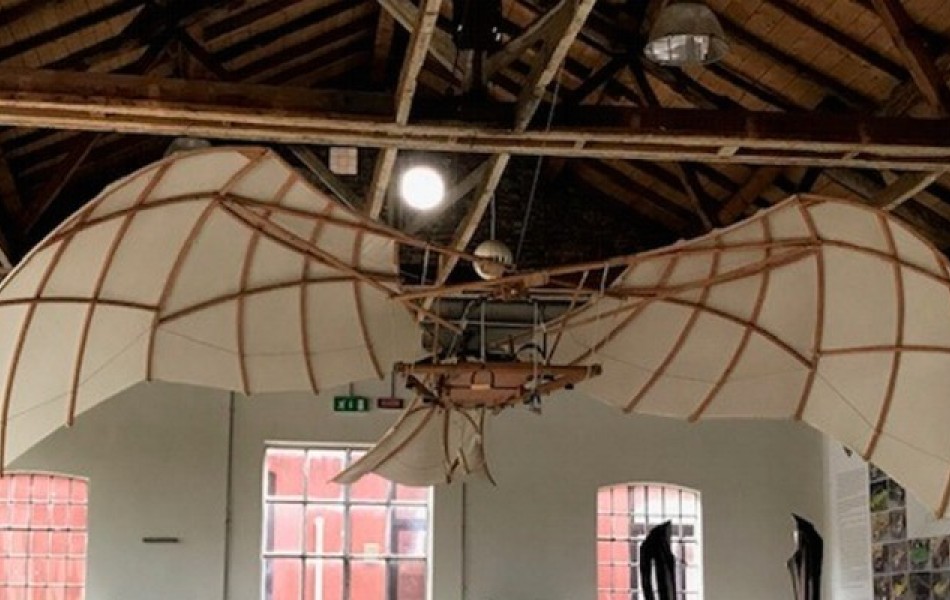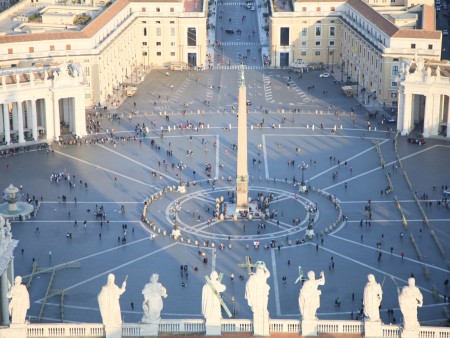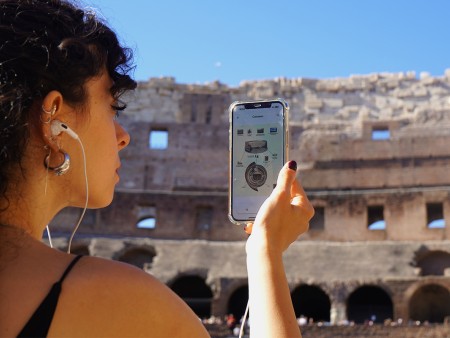The genius of flight: the projects and bold inventions of Leonardo da Vinci
The drawings and machines on flight of Leonardo da Vinci that challenged gravity

02 April 2024
Florence Travel GuideLeonardo Da Vinci, one of the greatest genius to have ever existed, was a scientist, an engineer, and an inventor of the Italian Renaissance. Throughout his life, Leonardo designed a vast number of inventions of all kinds, from everyday objects to revolutionary engineering works.
Among his many interests was a passion for nature. Leonardo loved studying nature and understanding its laws and mechanisms in order to apply such knowledge in everyday life. This passion led Leonardo to develop a true obsession with animals, particularly birds and their anatomy. From a young age, he meticulously observed the flight of birds, taking notes on wing movement and flight techniques.
Leonardo's observations and research on flight are scattered throughout dozens of pages. The most substantial and comprehensive part is contained in a manuscript of 18 sheets, called the "Codex on the Flight of Birds," written in 1505 and still preserved at the Royal Library of Turin.
Aeronautical Inventions
The study of bird flight, particularly the movement of their wings, inspired Leonardo da Vinci to design various models of flying machines, including the parachute, the aerial screw, and the ornithopter.
Leonardo da Vinci is known for having conceived, in 1485, a rudimentary but innovative design of the parachute. Leonardo's studies on air managed to surpass Aristotelian physics, and through countless experiments, he understood that air is a fluid and, being so, it is compressible. From this, he deduced that air could support a flying object through an increase in its density. It was thanks to this discovery that the parachute was born.
This project, contained in the "Atlantic Codex," envisioned a large linen sheet stretched over a pyramid-shaped structure, but unlike the modern parachute, it was not conceived as a rescue system but rather as a way to launch oneself from a height and glide.
In 2000, the parachute was actually built and tested by a team led by British architect Adrian Nicholas. A professional parachutist jumped from 3000 meters high and demonstrated that the parachute designed by Leonardo da Vinci works perfectly.
In addition to the parachute, Leonardo designed the aerial screw, considered the prototype of the modern helicopter. The project is described in the "Atlantic Codex", the most extensive collection of drawings and texts by Leonardo da Vinci. The aerial screw consists of a large circular drum with a spiral propeller on top which, when manually operated by a crew, would create thrust and consequently lift the structure into the air. In particular, the aircraft was inspired by the movement of screws entering wood and envisaged the presence of four men who would enable flight by rotating around the screw axis.
Of the project, Leonardo wrote, "I think that if the screw system is built properly and is rotated with sufficient energy, the screw will transform the surrounding air into a nut, after which it will rise into the air."
During his stay in Milan in 1490, Leonardo began drawing ornithopters. According to his drawings, the ornithopter consisted of a lightweight frame made of wood or metal, equipped with movable wings that could be operated by a person using levers or ropes. The idea was to reproduce the movement of birds in flight, thus creating the necessary thrust to lift the ornithopter into the air.
This engineering project had obvious limitations. Firstly, the ornithopter was designed to be manually operated by one person, but since human strength is limited, it would have been impossible to generate the necessary thrust to lift into the air and fly for long periods of time. Furthermore, the technologies available during the Renaissance did not allow for the creation of lightweight and resilient materials, making the entire structure heavy and aerodynamically inefficient.
Although there is no evidence to demonstrate that these engineering works inspired by bird anatomy were actually built, such inventions represented an important step forward in the field of aviation, anticipating fundamental concepts for human flight and inspiring the subsequent development of airplanes and helicopters.
Leonardo's greatest contribution is undoubtedly going beyond the meticulous collection of observations, details, and projects aimed at reproducing or giving wings to man following the flight of birds. Leonardo, at a certain point, begins to deduce from the multitude of flights studied some principles, in particular a physical law that encompasses and explains them all: air is compressible and when compressed it is capable of supporting a bird in flight through the wings. A principle, a law underlying the manifestations of events from which all these can be inferred.
It is the birth of the scientific approach, developed in the centuries that followed by Galileo and Newton.
It is the revolution that shapes our culture.
Our categories:
You may also be interested ...

Vatican Private Tour with Sistine Chapel & St. Peter's Basilica: Renaissance’s Wonders
Private tour
Discover with a skip the line Private Vatican Tour the Sistine Chapel, Vatican Museums and St Peter’s Basilica
starting from: € 375

Colosseum Guided Audio Tour with Roman Forum and Palatine Hill
Private tour
Discover Ancient Rome’s secrets and history with our immersive Colosseum guided audio tour, rich in image and content
starting from: € 51 € 42